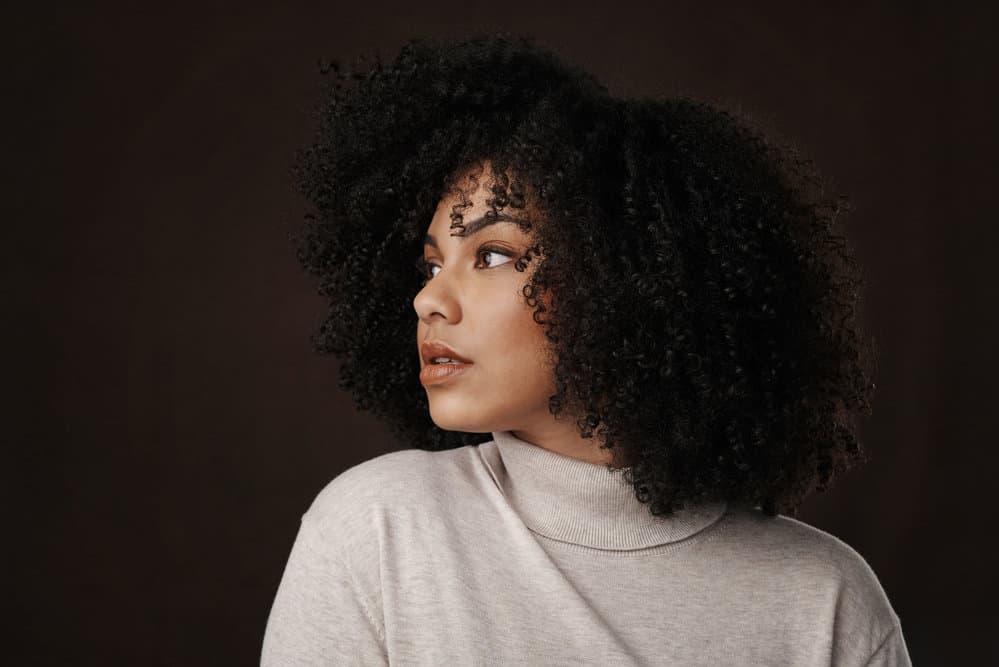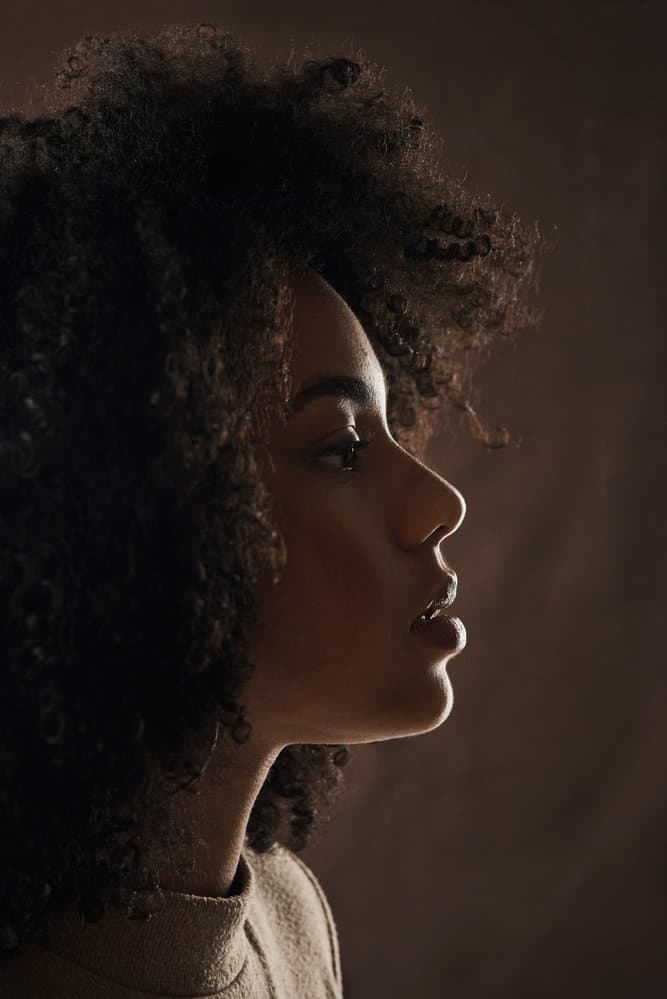
Have you ever noticed fuzzy white or gray lint on a dirty hair brush? In addition to being an eyesore, the build-up can negatively affect the health of your hair.
If you’re wondering how to clean lint out of a hairbrush, this is the article for you! We’ll walk you through everything you need to know to wash your hairbrush and prevent the lint from building up again.
Table of Contents
How Do You Clean Lint Out of a Hairbrush
To clean the lint out of a hairbrush, remove any visible hair and lint manually. Create a mixture of warm water and deep-cleaning shampoo in a bowl. Submerge the bristles in this solution for about 5 minutes, swishing occasionally.
Scrub the base and bristles of the hairbrush using a clean toothbrush and shampoo. Rinse with cool water and avoid wetting wood or padded sections. Allow the brush to dry on a towel with bristles facing downward.
Key Takeaways
- Product Buildup: Lint in brushes often consists of hair product residue and natural oils. This buildup can transfer onto hair strands and affect your hair and scalp health.
- Cleaning Tools: For thorough cleaning, use an old toothbrush to scrub the base of the brush and bristles. You can also use shampoo or dish soap for dirtier brushes.
- Material Matters: Be cautious with wooden brushes, ensuring only the bristles get wet. Plastic brushes can be submerged in water more freely.
- Routine Care: Regularly cleaning hair brushes prevents dirt and old hair products from getting on your hair and scalp. This regular care helps keep your hair clean.
- Drying: After washing, place brushes at an angle to drain water and protect wooden handles.
When you pass a linty brush through your hair, you transfer all the dirt and dust back onto your strands. To prevent this, wash your hairbrush when you see lint building up.
Want to know how to do it? Just follow these easy steps to remove lint from your hairbrush and leave it squeaky clean.
Step 1: Gather Your Materials
Got a linty hairbrush in need of a deep clean? The first step is to gather the following supplies.
- Shampoo
- Toothbrush
- Warm water
- Bowl
- Dirty hair brush
- Isopropyl alcohol (optional)
- Rat-tail comb (optional)
- Baking soda (optional)
- Scissors (optional)

Step 2: Cleaning Out the Hair
Once you’ve gathered everything you need, remove all of the hair and lint you can from the brush. You can either do this by hand or use the pointed end of your rat-tail comb to get in between the brush bristles. If you come across any stubborn knots or tangles, use a pair of scissors to remove them.
Step 3: Get Your Warm Water Soak Ready
Squeeze a few drops of your favorite deep-cleaning shampoo into a bowl of warm water. Mix it well until you see bubbles start to form. Add a few teaspoons of baking soda for an extremely dirty hairbrush to give the mixture some extra cleaning power.
Step 4: Dip Your Brush
Dip the bristles of your brush into the water and let it soak for around 5 minutes. While you can submerge plastic hairbrushes completely, water can damage other materials (e.g., wood handles).
To protect your brush, avoid getting the wood or fabric padding wet. Instead, dip just the hairbrush bristles into the water. Swish your brush around in the bowl of water every minute or so. That will help loosen stuck-on gunk and make your brush easier to clean.
If your brush is only slightly dirty, the dipping and soaking will usually be enough to clean your brush.

Step 5: Scrub Your Brush With a Clean Toothbrush
After five minutes have passed, pull your brush out of the water. Then, apply a drop or two of your favorite shampoo to a clean toothbrush and thoroughly scrub the brush’s base and bristles.
Ensure each bristle gets attention, and work your way from bottom to tip. Dip both brushes into the water to get rid of the gunk and avoid spreading it around.
Keep scrubbing your brush until you’ve removed all of the visible residue.
Step 6: Rinse Your Brush
Once satisfied, rinse your toothbrush and hairbrush with cool, clean water. Like before, try to keep wood or padded parts out of the water as much as possible.
Alternatively, you can dampen a clean cloth and wipe away the excess shampoo and hairbrush lint. After rinsing, give your brush a few shakes to remove excess water.
Step 7: Let Your Brush Dry
Put your brush on a clean towel with the bristles facing downward, and wait for it to dry. Laying the hairbrush with the bristles downward allows the water to drain and decreases the likelihood that your brush will retain moisture and grow mold.
If you can, position your hairbrush at an angle with the handle pointing upwards.
Some brush handles are hollow, so positioning them at an angle helps ensure water doesn’t collect in the hard-to-clean base.

Step 8: Sanitize Your Brush
After your brush is dry, you can sanitize it with a few spritzes of isopropyl alcohol for an even deeper clean. That will help eliminate any residual bacteria or fungi before they can be reintroduced to your strands.
This step is optional, so skip it if you feel like it's not necessary.
How to Minimize Lint in Your Hairbrush
The lint on your hairbrush is a combination of dust, fibers, leftover hair products, oils, and dead skin cells. Sounds gross, right?
Luckily, you can take steps to prevent this buildup and keep your brush cleaner for longer. Let’s look at them below.
Wash Your Brush Regularly
Regularly washing your hairbrush is the best way to prevent lint from building up. The frequency at which you wash your brush should coincide with how much product you use, how often you use the brush, and whether the brush looks dirty.
While there’s no hard rule on how often you should wash your hairbrush, most experts recommend cleaning it every two to three weeks.

Here are some other reasons you should clean your hairbrush regularly.
- A dirty brush transfers dirt, bacteria, and oil onto your scalp and strands.
- Skin and oil buildup provides a perfect breeding ground for bacteria, yeast, and dust mites.
- Using a dirty hairbrush can cause or exacerbate skin conditions like inflammation and dandruff.
Exfoliate Your Scalp
While most people know the benefits of exfoliating your skin, some will be surprised to learn that exfoliating your scalp is just as beneficial.
Exfoliation removes dead skin cells and leftover products, which cuts down on the tiny flakes and dandruff that eventually end up in your brush.
For the best results, exfoliate your scalp while it's soaking wet, preferably right after washing your hair. You can use a scrub or chemical exfoliant, depending on your preferences.
Can't decide which one is right for you?
Chemical exfoliants are generally considered safer than scrubs because physical exfoliants can cause tiny tears and abrasions.
Once you decide on your exfoliant, gently massage the product into your freshly washed scalp using small circular motions.
Let it sit for a few minutes before rinsing well with cool water. Repeat this process once a week, and you’ll notice your brushes and scalp stay cleaner for much longer.

Use a Hair Brush Cleaner
A hairbrush cleaner is a special tool designed to remove hair and lint buildup from your hairbrush. It has stiff metal prongs that easily cut through buildup and tangled hair.
Hairbrush cleaners are even perfect for those notoriously hard-to-clean boar bristle brushes. Want to give one a try?
Just rake the hairbrush cleaner’s metal prongs through your brush’s bristles and repeat the process until you have removed the lint and hair. Then, rinse both brushes with water and let them dry.
Use Lighter Weight Hair Products
Have you noticed that your brush seems to get linty right away? It could be a sign that your hair products are too heavy or sticky. Products that leave a heavy residue behind on your brush are probably doing the same thing to your strands.
Be careful not to overload your hair; instead, pick lighter oils, creams, and serums.
You should also avoid sticky products like holding sprays and gels, as they attract and hold onto dust and dirt. If you can’t avoid them, try to brush your hair before applying the product rather than after.

Frequently Asked Questions
Do you have questions about cleaning lint from hairbrushes? Here are several straightforward answers to the most commonly asked questions.
How Do You Get Lint off a Hairbrush?
To get lint off a hairbrush, start by manually removing as much hair and lint as possible. Then, prepare a soak with warm water and a few drops of deep-cleaning shampoo. Dip the hairbrush bristles into the mixture, swishing occasionally.
After 5 minutes, apply a little shampoo and scrub the hairbrush with a clean toothbrush. Rinse the brush with cool water, ensuring the wood or padded parts stay dry. Finally, lay the brush on a towel with bristles facing downward to dry.
Why Is There Lint in My Hairbrush?
Lint accumulates in your hairbrush primarily because it's not cleaned frequently. Small particles, including hair, dirt, and lint, become trapped among the bristles as you use the brush. These particles build up without regular cleaning, leading to a noticeable amount of lint.
How Do You Get Lint Balls off of Brush Bristles?
To remove lint balls from brush bristles, use your fingers to eliminate any large lint or hair clumps. Soak the brush in warm, soapy water for a few minutes to soften the remaining lint balls. Afterward, utilize a toothbrush to meticulously scrub the bristles, dislodging and removing any persistent lint or hair particles.
What Is the Dust Fluff in My Hairbrush?
Dust fluff is a mixture of hair, dirt, and lint that can build up quickly if the brush is not cleaned regularly. The particles can create a thick coating that dulls the brush's effectiveness and makes it harder to use. To prevent dust fluff from building up in your hairbrush, cleaning your brush frequently is essential.
- Brushes Similar to Denman Brush
- How Often Should You Brush Curly Hair
- Best Straightening Brush for Black Hair
- How To Clean a Revlon Hair Dryer Brush
Maintaining a clean brush is crucial for optimal hair and scalp health. Make sure that loose hair and product buildup don't go back onto your hair strands. It's essential to clean your brushes, whether they're paddle brushes or makeup brushes. We hope this article helps you remove lint from your hairbrush and stop it from building up.




